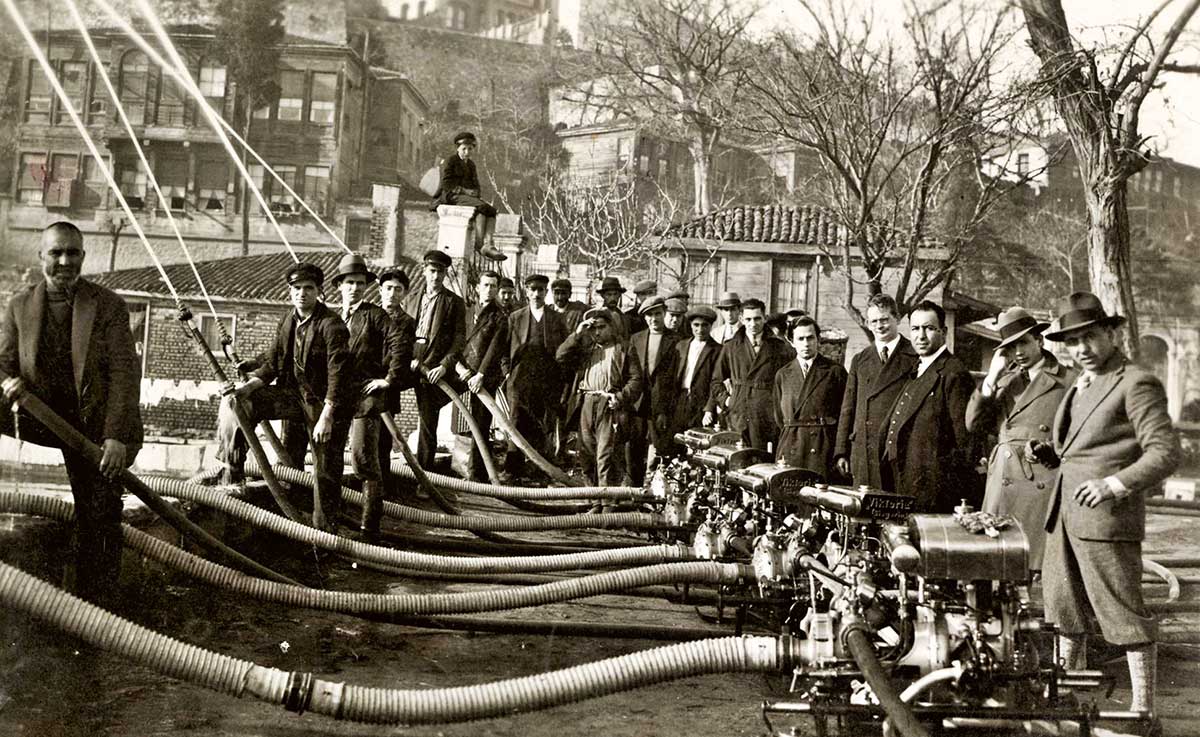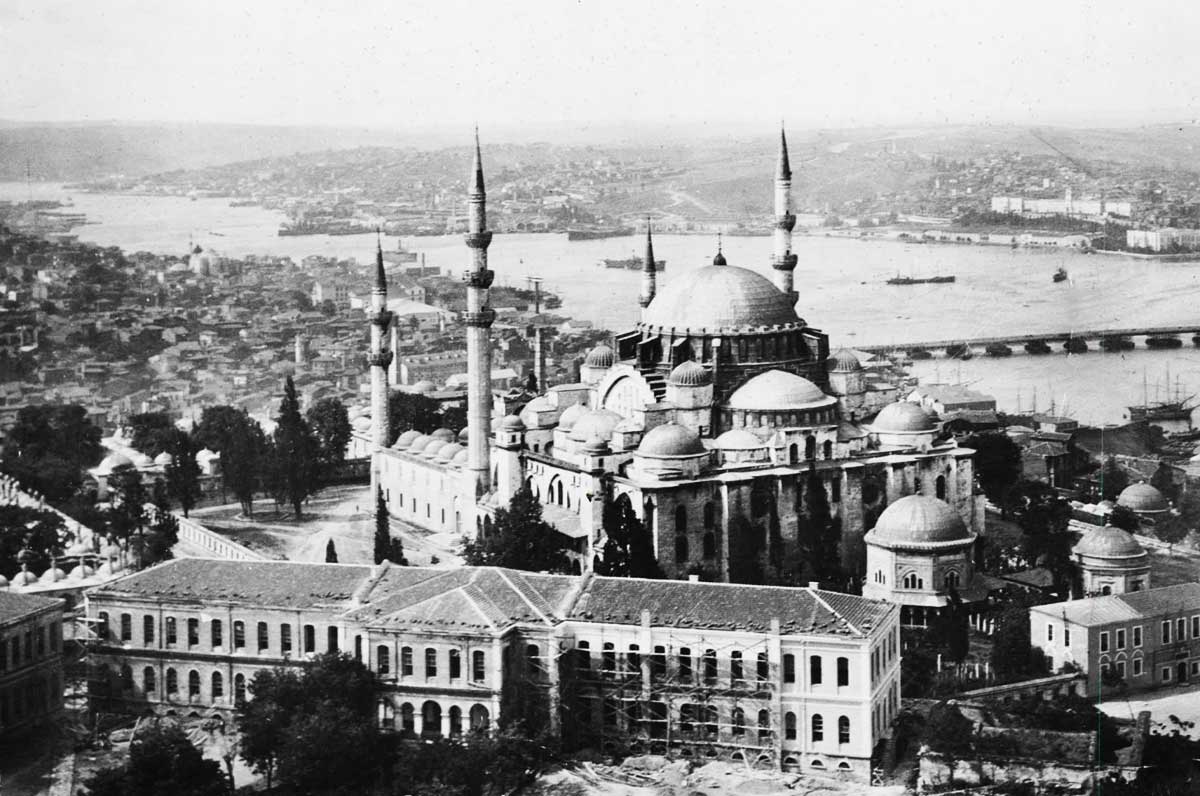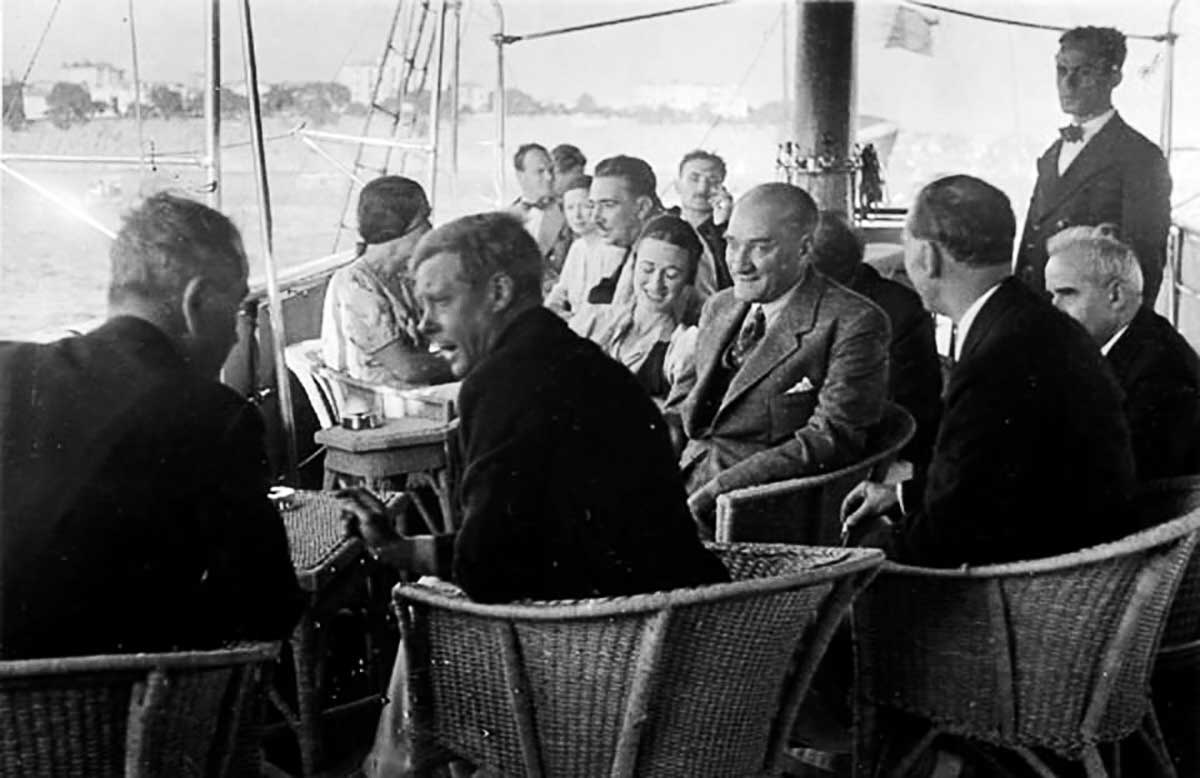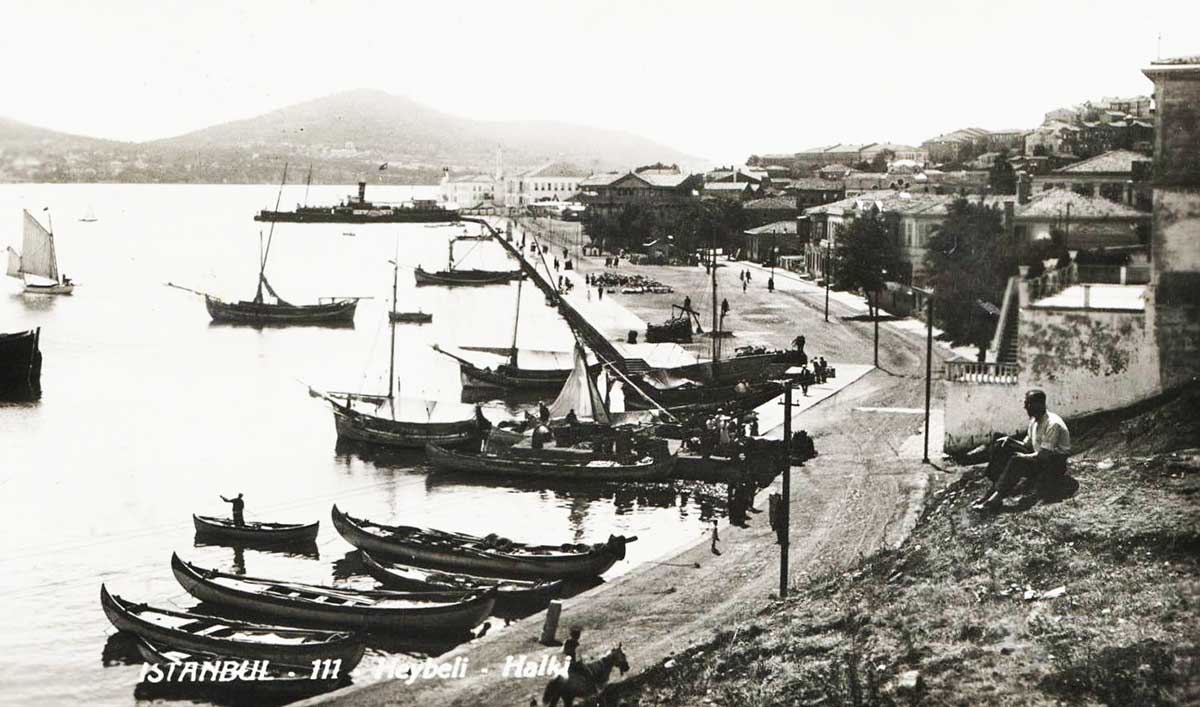Acrobatics was one of the most popular live entertainments in the Ottoman Empire. They were usually the member of the guild of Janissaries, and they were making money from giving performances out on the streets, especially when it was Ramadan evenings, religious festivals as well as imperial weddings and circumcision festivals. They remained popular during the republican times as well. In this photo taken by Selahattin Giz in 1930, you can see a live entertainment on the streets of Kadırga neighbourhood.
The first fire brigade department, called as the Tulumbacılar Ocağı, was established during the reign of Ahmet III. This department was abolished in 1826 along with guild of Janissaries but after the Hocapaşa Fire erupted, the fire brigade department was re-established as a small fire brigades in each neighbourhood. After the Turkish Republic state was founded in 1923, the Istanbul Metropolitan Municipality decided to modernize the department. For this, the municipality bought a water-pumping set from the German company. Taken in the courtyard of Dolmabahçe Mosque on 14 January 1931, the photo shows control examination of new water-pumping sets.
In this photo, you see the Süleymaniye Mosque with the view of the Golden Horn from the Beyazıt Tower. The photo is said to be taken in 1936. Süleymaniye Mosque is one of the masterpieces of architect Sinan, the Ottoman’s greatest architect. The empire’s greatest sultan, who was Suleiman the Magnificent, wanted to show his magnificence with an everlasting building. He ordered the construction which began and completed in the 1550s.
In this photo, you see Turkey’s one of the oldest woman educator who is reading the declaration of the rights of the child at the Taksim Square in 1930. Nakiye Elgün was born in 1882 in Istanbul and died in 1954. After the political rights were given to women in 1934, she was elected as Erzurum deputy and entered the Parliament with 17 women deputies. They were the first women deputy in Turkish Parliament took place between 1935 and 1939.
What you see in this photo is the Valens Aqueduct in 1936. You may be surprised due to the houses in front of the aqueduct because they don’t exist anymore. They were all demolished because of the construction of the Atatürk Boulevard which passes under its arches today. The Valens Aqueduct is a Roman aqueduct which was the most important water-providing system of the Constantinople during the Eastern Roman period. It was used by Byzantines as well as the Ottomans and it is now Istanbul’s one of the most important landmarks.
The photo you see dated from 1936, a boat trip hosted by Atatürk, the founder of Turkish Republic, with King Edward VIII, the king of United Kingdom, on the left. Ernst Simpson, the beloved wife of the king, is sitting on Atatürk’s right. This was King Edward’s first overseas journey. According to the note, the group is enjoying watching the sea races at Moda on 6th September 1936.
The area of Taksim was the centre of entertainment in the 1930s too. The building you see in the photo was one of the most popular entertaining complexes in the city at that time. Its name was “Dalla Terra Alla Luna”, in Italian language, meaning from “the world to moon”, and the slogan was written below; “original – divertente”, meaning “original and entertaining”. The entrance fee was 50 kuruş for each person as it was written on the cash point.
Here is the photo of the second largest island of the Prince Islands in 1934. Yesari Asım Arsoys says in his famous song “Every night in Heybeliada we walked under the moonshine”. That’s the joy of this charming island in the Sea of Marmara. But not only this, this charming place for a weekend escape also offers you to engage with history, peaceful times, beautiful scenery, narrow beaches, pine forests, stylish Ottoman mansions. While you enjoy the shades of blue and green, you are also far from the hustle of the city. No motor vehicles still not allowed!
It is really hard to witness such scenery in the modern Istanbul. Here is a shoeshine parlour in Istanbul in the 1930s. Ladies are getting a shoe shine and all the workers are men. This shoeshine parlour was said to be in the district of Beyoğlu. The date is also doubtful as some accounts claim that the photo was taken in the 1940s.
Here is the photo of Melek Nimet Özden or known as Nimet Abla (Blessed Sister) in 1932. She was a national lottery seller who started her job in 1928. After one of her tickets won the lottery in 1931, she used her money for advertising. With this, she has become a public figure of luck in Turkey. She opened the Nimet Abla lottery ticket shop which may be the luckiest booth in the world. Her lottery ticket shop is renowned for producing regular winners so much that punters are flocking to her lottery ticket shop.










